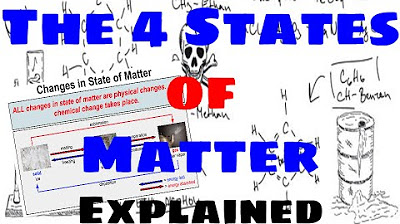Ecological Interactions
Summary
TLDRIn this educational video, Mr. Poplar explores the concept of interactions in ecology, focusing on three main types: competition, predation, and symbiosis. He explains competition as organisms vying for the same resources, like trees competing for water or herbivores for food. Predation is described as one organism killing and consuming another, such as a predator and its prey. Symbiosis encompasses mutualism, where both parties benefit (e.g., bees and flowers), commensalism, where one benefits and the other is unaffected (e.g., cattle egrets and cows), and parasitism, where one benefits at the expense of the other (e.g., mosquitoes and their hosts). The video is designed to educate and engage viewers on the complex relationships within ecosystems.
Takeaways
- 🌿 **Ecology Overview**: Ecology is the study of interactions between living organisms and their environment, including both biotic (living) and abiotic (non-living) factors.
- 🤝 **Interactions Defined**: Interactions in ecology refer to any effect that two or more organisms have on each other, such as competition, predation, and symbiosis.
- 🏆 **Competition**: A type of interaction where organisms compete for the same resources, which can negatively impact the fitness (health) of one or both parties.
- 🌳 **Resource Competition Examples**: Trees competing for water and sunlight, and herbivores like elk and deer competing for vegetation.
- 🐃 **Predation**: An interaction where one organism (the predator) kills and eats another (the prey) for sustenance.
- 🦅 **Predation Examples**: Eagles catching fish and other predatory scenarios where one organism benefits at the expense of another.
- 🌼 **Symbiosis**: A close relationship between two different species where at least one benefits.
- 🐝 **Mutualism**: A type of symbiosis where both species benefit, exemplified by bees and flowers, where bees get nectar and flowers get pollinated.
- 🐜 **Commensalism**: A symbiotic relationship where one species benefits while the other is unaffected, such as cattle egrets feeding on insects disturbed by cattle.
- 🦟 **Parasitism**: A harmful symbiotic relationship where one species (the parasite) benefits at the expense of the host, like mosquitoes feeding on blood.
- 🌲 **Parasitism Examples**: Mistletoe growing on trees, harming the host tree by draining its resources.
Q & A
What is ecology and what does it study?
-Ecology is the study of living and nonliving things as they interact with each other.
What is an example of interaction given in the script?
-An example of interaction is bull elk butting heads, which is a form of competition known as sparring.
Why do bull elk spar with each other?
-Bull elk spar to compete for the position of the head of the harem, as a harem only has one bull elk.
What is competition in ecology?
-Competition in ecology is an interaction between two organisms where they need the same resources, and the presence of one organism can hurt the fitness of the other.
How do trees compete with each other?
-Trees compete for resources such as water and sunlight, which can affect their health and growth if they are too close to each other.
What is predation and how is it different from competition?
-Predation is an interaction where one organism kills and eats another, unlike competition where both organisms are alive and competing for resources.
What is symbiosis and what are its different types?
-Symbiosis is a close relationship between two species that benefits at least one of them. The types include mutualism, commensalism, and parasitism.
What is mutualism and provide an example?
-Mutualism is a type of symbiosis where both species benefit. An example is the relationship between bees and flowers, where bees get nectar and flowers get pollinated.
Explain commensalism and give an example.
-Commensalism is a type of symbiosis where one species benefits and the other is neither helped nor harmed. An example is cattle egrets feeding on insects disturbed by cattle, where the egrets benefit and the cattle are unaffected.
What is parasitism and how does it differ from mutualism?
-Parasitism is a type of symbiosis where one species (the parasite) benefits at the expense of the other (the host), which is harmed. This is different from mutualism, where both species benefit.
Can you provide an example of parasitism mentioned in the script?
-An example of parasitism from the script is the mosquito feeding on human blood, where the mosquito benefits and the human is harmed.
Outlines

Cette section est réservée aux utilisateurs payants. Améliorez votre compte pour accéder à cette section.
Améliorer maintenantMindmap

Cette section est réservée aux utilisateurs payants. Améliorez votre compte pour accéder à cette section.
Améliorer maintenantKeywords

Cette section est réservée aux utilisateurs payants. Améliorez votre compte pour accéder à cette section.
Améliorer maintenantHighlights

Cette section est réservée aux utilisateurs payants. Améliorez votre compte pour accéder à cette section.
Améliorer maintenantTranscripts

Cette section est réservée aux utilisateurs payants. Améliorez votre compte pour accéder à cette section.
Améliorer maintenantVoir Plus de Vidéos Connexes

The Four States of Matter - Explained

Lab Equipment - Explained

3. Gr 11 Life Sciences - Population Ecology - Theory 3 Mark Recapture Method

4. Gr 11 Life Sciences - Population Ecology - Worksheet 1

PENJASKES KELAS X - SOFTBALL

Introduction to Culture [AP Human Geography Review Unit 3 Topic 1]

Menentukan Mr ( massa molekul relatif )
5.0 / 5 (0 votes)
